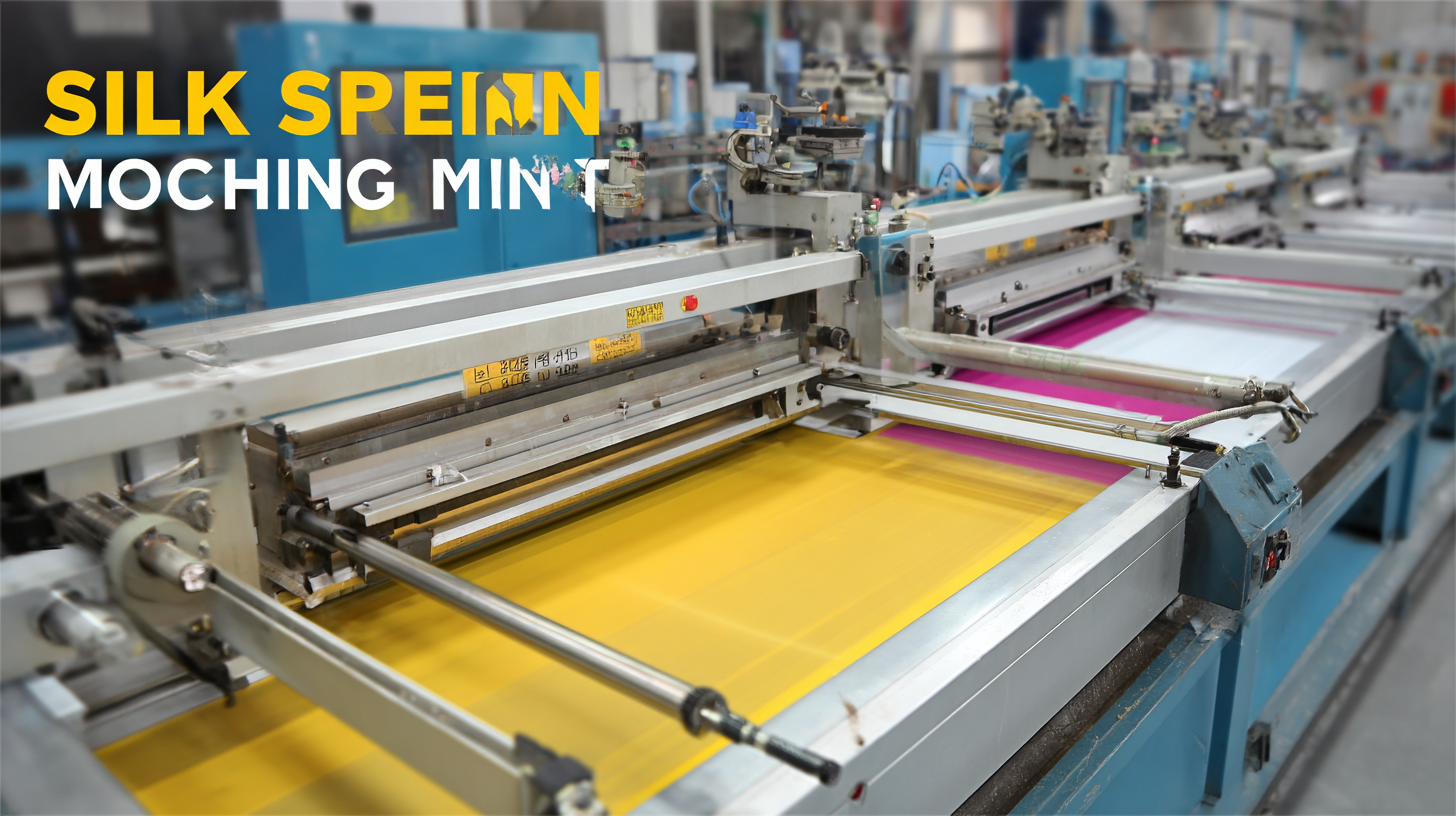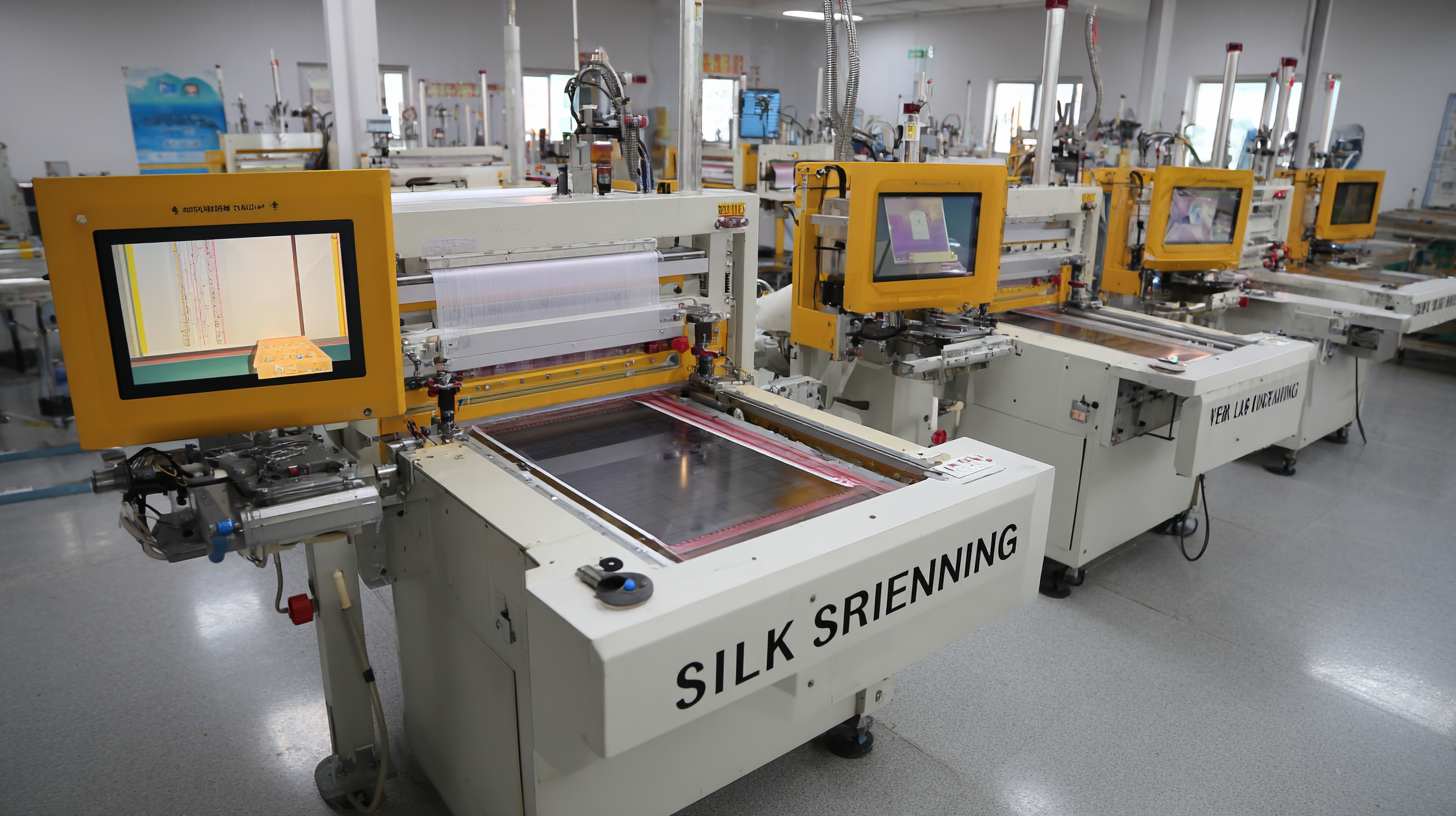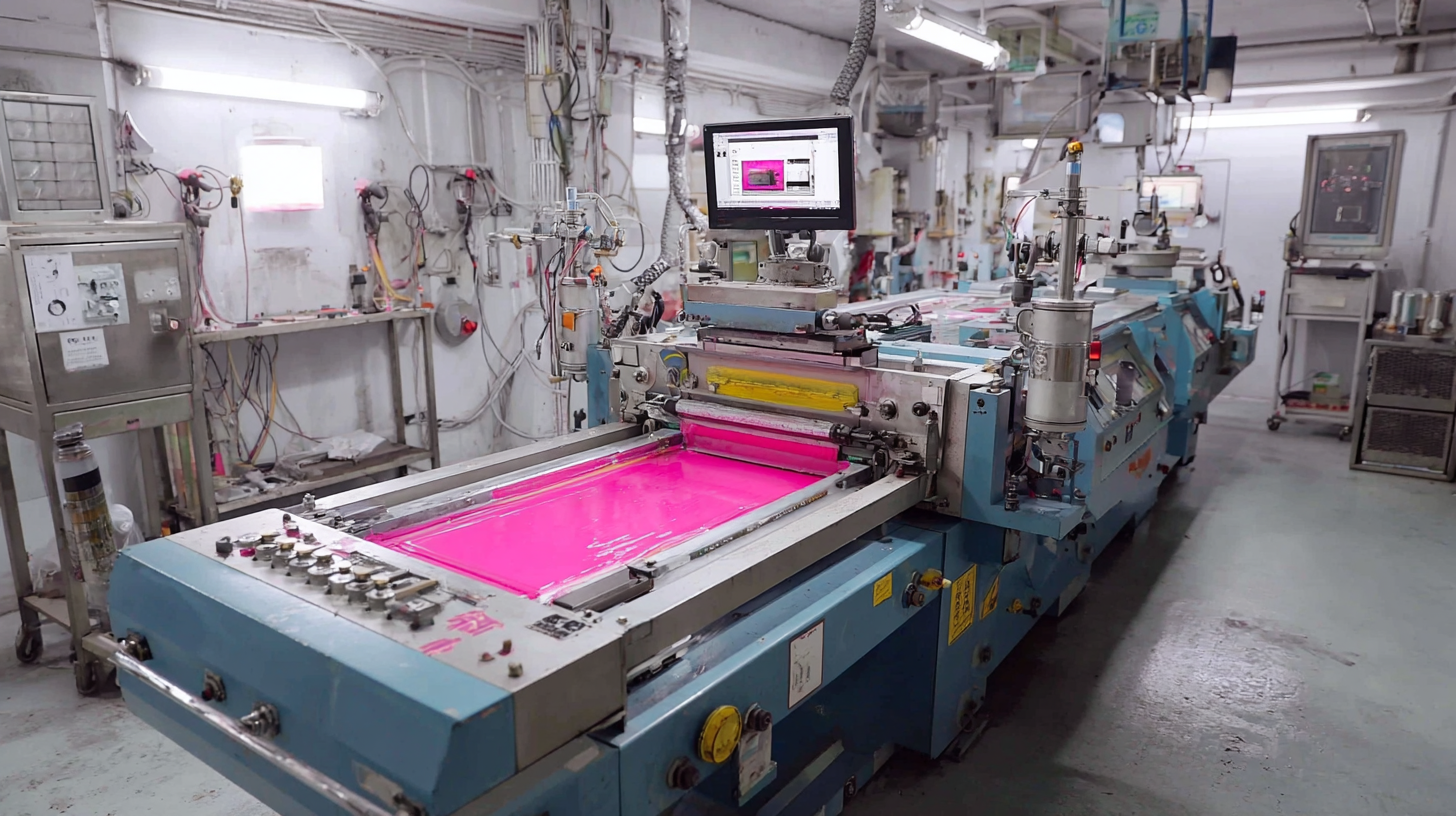The advent of the Silk Screen Printing Machine has revolutionized modern manufacturing, particularly in sectors such as textiles, electronics, and packaging. According to a recent report by Smithers Pira, the global screen printing market is expected to surpass $5 billion by 2025, driven by advancements in machine technology and increasing demand for customized production.
 The efficiency of manufacturing processes has significantly improved due to the precision and speed offered by modern silk screen printing machines, enabling manufacturers to meet higher standards of quality while reducing waste. Furthermore, the integration of automation in these machines has led to a reduction in labor costs and production time, positioning silk screen printing as a crucial technology in the competitive landscape of modern manufacturing. As we look towards 2025, understanding the impact of these machines is essential for industry stakeholders aiming to enhance operational efficiency and adapt to market trends.
The efficiency of manufacturing processes has significantly improved due to the precision and speed offered by modern silk screen printing machines, enabling manufacturers to meet higher standards of quality while reducing waste. Furthermore, the integration of automation in these machines has led to a reduction in labor costs and production time, positioning silk screen printing as a crucial technology in the competitive landscape of modern manufacturing. As we look towards 2025, understanding the impact of these machines is essential for industry stakeholders aiming to enhance operational efficiency and adapt to market trends.
The integration of high-quality silk screen printing machines in modern manufacturing significantly enhances efficiency, particularly within industries such as electronics and solar energy. These machines provide precision and consistency, which are crucial for producing complex components while maintaining high throughput. For instance, as reported in recent industry insights, the global silk screen printing market is projected to grow substantially, driven by the demand for innovative production techniques in sectors like photovoltaics.
In the context of solar energy, silk screen printing is an indispensable process for manufacturing solar cells, as it allows the application of conductive materials with high accuracy. This technique ensures that the fine features necessary for efficient energy absorption are effectively realized. With the increasing global emphasis on renewable energy solutions, the utilization of high-quality silk screen printing machines is directly linked to improved solar cell performance and durability, thereby addressing the industry's need for sustainable and efficient manufacturing practices.
Moreover, high-quality silk screen printing not only enhances production speed but also reduces material waste. A recent analysis highlights that advancements in printing technologies contribute to higher yield rates, which are essential for maintaining competitiveness in the fast-evolving manufacturing landscape. As technology continues to advance, the role of silk screen printing machines in optimizing operational efficacy becomes increasingly critical, marking a pivotal shift in modern manufacturing paradigms.
 Silk screen printing technology has fundamentally transformed the way manufacturers approach production speed and output quality. By using a mesh stencil, this technique allows for precise application of inks and dyes, resulting in vibrant and consistent colors across various materials. This precision not only enhances the aesthetic appeal of products but also reduces material waste, as manufacturers can achieve more accurate designs in fewer passes. As a result, businesses can scale up their production rates without compromising on product quality, catering to the increasing demand in today's fast-paced market.
Silk screen printing technology has fundamentally transformed the way manufacturers approach production speed and output quality. By using a mesh stencil, this technique allows for precise application of inks and dyes, resulting in vibrant and consistent colors across various materials. This precision not only enhances the aesthetic appeal of products but also reduces material waste, as manufacturers can achieve more accurate designs in fewer passes. As a result, businesses can scale up their production rates without compromising on product quality, catering to the increasing demand in today's fast-paced market.
Moreover, advancements in silk screen printing machinery have equipped manufacturers with systems that streamline the printing process. Modern machines come with automated features that significantly cut down setup times and minimize printing errors. This automation enables companies to adapt quickly to changing designs or order sizes, allowing for greater versatility in their production lines. The synergy between speed and quality ensures that manufacturers can meet tight deadlines while still adhering to high standards, leading to increased customer satisfaction and loyalty.
The investment in advanced silk screen printing equipment can significantly enhance cost-effectiveness in modern manufacturing processes. As industries continue to evolve, the demand for high-quality prints and rapid production cycles has intensified. Top-tier silk screen printing machines not only ensure precision and consistency but also reduce material waste, leading to lower operational costs. This makes them a wise choice for manufacturers aiming to maintain competitiveness in a fast-paced market.
Recent advancements in related technologies, such as low-temperature co-fired ceramics (LTCC) and innovative conductive inks, further underscore the importance of investing in superior printing solutions. For instance, the growth of the LTCC market across various applications—from telecommunications to automotive electronics—highlights how manufacturers can capitalize on emerging trends. By integrating advanced silk screen printing techniques, companies can streamline their production processes and adapt to the growing demand for high-performance components, ultimately achieving greater efficiency and profitability.

In the realm of modern manufacturing, the evolution of silk screen printing machines has significantly enhanced customization and design versatility. These advanced printers empower businesses to produce unique, personalized designs that cater to specific customer preferences. With high precision and adaptability, modern silk screen printers can efficiently print intricate graphics on a variety of materials, from textiles to plastics, allowing for a broader range of products and designs.
Furthermore, the introduction of automated features in these machines streamlines the printing process, drastically reducing turnaround times. This efficiency shift not only meets the growing demand for customized products but also enhances productivity within the manufacturing workflow. As brands increasingly leverage the ability to create bespoke items, the modern silk screen printing machine stands at the forefront, enabling them to push creative boundaries and deliver tailored solutions to their consumers. The seamless integration of technology in design capabilities reflects a commitment to innovation that is shaping the future of manufacturing.
This chart illustrates the increase in manufacturing efficiency correlated with the use of modern silk screen printing machines, highlighting the benefits in customization and design versatility.
The comparative analysis of traditional and modern silk screen printing methods highlights significant advancements that have reshaped manufacturing efficiency. Traditional silk screen printing, while effective, often relies on labor-intensive processes and manual interventions. This can lead to inconsistencies in output, longer turnaround times, and increased operational costs. The manual mixing of inks and the setup time required for screens can hinder productivity, making it less feasible for high-demand environments.
In contrast, modern silk screen printing technology integrates automated systems and digital tools that streamline the entire process. State-of-the-art machines offer precision and speed, enabling manufacturers to produce high-quality prints with minimal human intervention. Enhanced software capabilities allow for quicker design adjustments and a reduction in waste through more efficient ink usage. As a result, companies can achieve higher output levels while maintaining the integrity of their designs, ultimately leading to greater profitability and sustainability in modern manufacturing practices.
